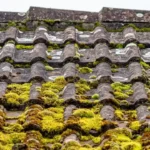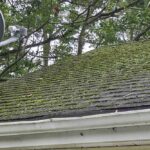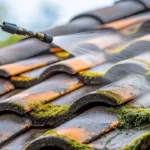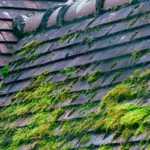In recent years, the concept of planning a rooftop meadow has gained significant attention among homeowners seeking to embrace sustainable living. Transforming an unused rooftop into a lush meadow not only adds aesthetic value but also offers numerous environmental benefits. This article will guide you through the essential steps of creating your very own rooftop meadow.

Understanding the Benefits of a Rooftop Meadow
Before diving into the planning process, it’s important to understand why a rooftop meadow is beneficial. These green spaces can help reduce urban heat, manage stormwater runoff, and provide a habitat for wildlife. Moreover, they can improve air quality and enhance the thermal performance of buildings, potentially lowering energy costs.
Environmental Impact
Rooftop meadows play a crucial role in mitigating the urban heat island effect. By absorbing sunlight and providing shade, they reduce the overall temperature in urban areas, making cities more comfortable during hot months. Additionally, these meadows can capture and filter rainwater, reducing the risk of flooding and easing the burden on city drainage systems.
Economic Advantages
Investing in a rooftop meadow can lead to long-term economic benefits. A well-designed meadow can increase the lifespan of a roof by protecting it from UV radiation and temperature fluctuations. Furthermore, the improved insulation can lower heating and cooling costs, offering savings on energy bills.
Essential Steps in Planning a Rooftop Meadow
Creating a rooftop meadow requires careful planning and execution. Here are the key steps you need to follow:
1. Assess Structural Integrity
Before starting, it’s crucial to assess whether your rooftop can support the additional weight of soil, plants, and water. Consulting with a structural engineer can help determine the load-bearing capacity of your rooftop.
2. Research Suitable Plants
Not all plants are suitable for rooftop environments. Opt for native species that are drought-resistant and can withstand local weather conditions. Consider using a mix of grasses, wildflowers, and sedums for a diverse and resilient meadow.
3. Design the Layout
Designing the layout involves deciding on the placement of plants, pathways, and any additional features like seating areas. Ensure there is proper drainage and accessibility for maintenance activities.
4. Prepare the Roof
Preparation involves waterproofing the roof, installing a root barrier, and setting up a drainage layer. These steps are critical to prevent damage to the building and ensure the longevity of the meadow.
5. Planting and Maintenance
Once the roof is prepared, you can start planting your chosen species. Regular maintenance, including watering, weeding, and fertilizing, is essential to keep the meadow healthy and thriving.
Common Challenges in Planning a Rooftop Meadow
While creating a rooftop meadow can be rewarding, it comes with its own set of challenges. Understanding these challenges can help you prepare better:
Weather Conditions
Rooftop meadows are exposed to harsh weather conditions such as strong winds, extreme temperatures, and heavy rainfall. Selecting resilient plants and designing windbreaks can help mitigate these challenges.
Pest Management
Pests can be a concern for rooftop meadows. Implementing integrated pest management strategies can help keep pest populations in check without harming the environment.
Exploring Innovative Solutions
Innovations in green roofing technology are continually improving the feasibility and functionality of rooftop meadows. For instance, modular systems allow for easier installation and maintenance, while new soil substrates enhance plant growth and water retention.
Modular vs. Built-in Systems
Deciding between modular and built-in systems is an important consideration. Modular systems offer flexibility and ease of installation, while built-in systems provide a more permanent solution. For more information on these systems, you can check out modular vs. built-in green roofs.
Utilizing Recycled Materials
Incorporating recycled materials in the construction of a rooftop meadow can further enhance its sustainability. For insights on how to use recycled materials effectively, visit green roof recycling materials.
Maintenance and Longevity
Regular maintenance is key to ensuring the long-term success of your rooftop meadow. This involves periodic inspections, replanting, and adjusting irrigation systems as needed.
Expected Lifespan
The lifespan of a rooftop meadow can vary based on factors like maintenance, climate, and plant selection. Generally, with proper care, a rooftop meadow can last several decades. For more details on the lifespan of green roofs, check out green roof lifespan.
Financial Considerations
Initial costs can be a concern for many homeowners. However, it’s important to weigh these against the long-term financial benefits of reduced energy costs and increased property value.
Cost vs. Benefit Analysis
Conducting a cost vs. benefit analysis can help determine the financial viability of your rooftop meadow project. For a detailed exploration of the costs and benefits, refer to cost vs. benefit green roofing.
FAQs
1. What is the best type of plants for a rooftop meadow?
Native, drought-resistant plants are ideal for rooftop meadows. They are adapted to local climates and require less maintenance.
2. How do I ensure proper drainage on my rooftop meadow?
Installing a drainage layer and ensuring adequate slope are critical for proper drainage. These prevent water accumulation and potential roof damage.
3. Can I install a rooftop meadow on any type of building?
Not all buildings are suitable for rooftop meadows. It is essential to assess the structural integrity and load-bearing capacity of the building before proceeding.
For additional questions, you can explore more at green roofing FAQs.

Conclusion
Planning a rooftop meadow is a rewarding endeavor that combines environmental stewardship with personal satisfaction. By following the guidelines outlined in this article, you can create a vibrant and sustainable green space that benefits both your home and the environment. For further reading on green roofing, you might find this external resource helpful.
This article contains affiliate links. We may earn a commission at no extra cost to you.








